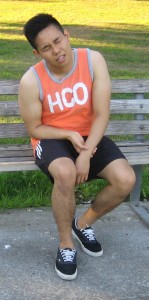Osteoarthritis is basically a degenerative condition triggered by wear-and-tear of the joints and damage to the cartilage. Since the fingers are used throughout the years, they are subjected to gradual joint deterioration. Based on studies conducted, osteoarthritis typically develops at the base of the thumb, finger joint closest to the fingertip and on the finger joint in the center finger. Always bear in mind that osteoarthritis develops on the joints over time. Once the visible indications of osteoarthritis manifest on the fingers, it is important for the individual to seek help while the disease is still in its early stages.
How osteoarthritis affects the thumb
The individual must watch out for awkward hand coordination. The basilar joint where the thumb meets the wrist is a common site where osteoarthritis develops. An initial indication of an osteoarthritis symptom on the thumb includes problems with the hand grip and twisting. The thumb and fingers should work together to grip or pinch objects. Once the base of the thumb is swollen, it could not grip jar lids, twist off bottle caps or even turn a key in a lock.
How the middle joint is affected
The individual must also watch out for small-sized cysts or bumps at the central joint of the finger which is called the proximal interphalangeal. Take note that these protrusions at the side or top of the joint are visible but painless during the early stages of osteoarthritis. The swelling can disrupt normal mobility, thus resulting to the inward curve of the fingers.
What happens on the end joints on fingers?

It is important to check for nodules or nodes at the last joint that is close to the fingertip. The end joint which is called the distal interphalangeal usually develops fluid bumps at the same time as the PIP joints. Always remember that the DIP joint can affect the movement of the fingers. The individual will find it difficult to pick up small objects such as pins or needles.
Diminished mobility
There is increasing stiffness in the fingers in which they are no longer flexible since the protective cartilage between the finger joints wears out. Refined movements such as holding a pencil or fastening small-sized buttons are difficult to carry out. As a first aid measure, you can soak the hands of the individual in warm water or encourage him/her to wear gloves during exercise to help movement during the early stage of osteoarthritis since warmth relieves the stiffness. Using a cold compress after exercise will help minimize the swelling of the inflamed joints. If you want to learn more about the application of cold and heat on injuries, all you have to do is to register in a first aid course.
When to consult a doctor
The individual must consult a doctor and report symptoms of finger stiffness, joint nodes or numbness of the fingertips. A simple examination can already confirm osteoarthritis of the fingers. Lab tests and imaging can reveal the specific damage on the joints. In most cases, the doctor can recommend a consulting with a specialist for a detailed evaluation.
